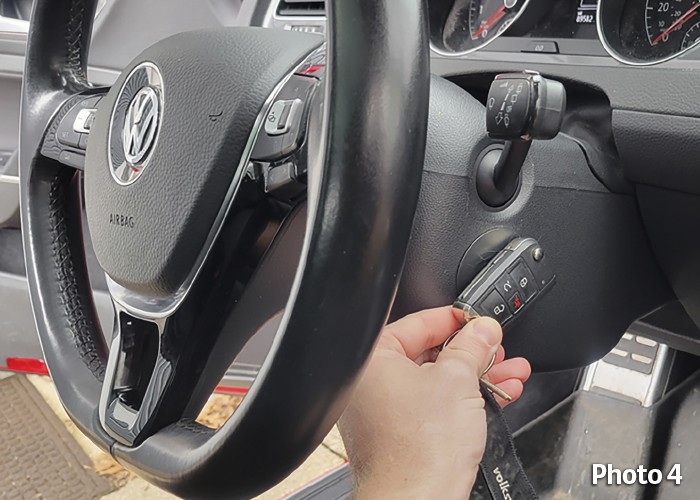Keyless entry and push-button start systems are becoming increasingly common in modern vehicles, including Volkswagens. While convenient, these systems can present unique diagnostic and repair challenges. This guide provides a comprehensive overview of Volkswagen’s Keyless Entry and Start System (KESSY), focusing on how to program a VW key fob.
Understanding VW Keyless Entry Systems
Before diving into programming, it’s crucial to differentiate between Volkswagen’s two primary keyless systems:
- Remote Keyless Entry (RKE): Utilizes a flip-out key and a traditional ignition switch on the steering column. The key must be inserted to start the engine.
- Keyless Entry and Start System (KESSY): Employs antennas to detect the key’s presence within the vehicle. A push-button starts the engine, eliminating the need for a traditional ignition switch. KESSY keys may have a hidden emergency key blade.
How KESSY Works
KESSY uses low-frequency (LF) transmitters in the key fob and antennas located throughout the vehicle (exterior door handles, cabin, trunk). These antennas detect the key’s unique ID, allowing for passive entry and push-button start. Various control modules, including the Access/Start Control Module (J518) and the Central Control Module (J393), work in conjunction to operate the KESSY system.
The Role of the Immobilizer
Volkswagen’s immobilizer system (IMMO) works independently of KESSY to authenticate the key. If the IMMO doesn’t recognize the key, the engine will start but shut off within a few seconds. This is a critical distinction when diagnosing starting issues.
Diagnosing KESSY Issues
Troubleshooting KESSY problems involves replicating the customer’s complaint, scanning for fault codes, checking fuses and wiring, and consulting OEM service information. If a low key battery is suspected, holding the key against the steering column’s sensor ring can inductively power the key and allow the engine to start.
Tools for Programming a VW Key Fob
Programming a VW key fob requires a diagnostic scan tool, such as VCDS or a compatible aftermarket tool. You’ll also need access to key cutting services for traditional keys or replacement key fobs for proximity keys. Specialized equipment, like the VAS 6345 resistor decade, is necessary to accurately test the key fob battery voltage under load.
The Programming Process
Most VW key programming procedures involve putting the vehicle into a “learn mode” for onboard programming. This process typically involves programming the vehicle to recognize the new key’s unique ID rather than programming the key itself. Some newer models may require a PIN code to initiate the process.
Best Practices for Programming
Before programming, scan for fault codes, ensure a healthy vehicle battery, and have all keys (original and replacements) present. Follow on-screen prompts carefully throughout the procedure.
Conclusion
Understanding Volkswagen’s keyless entry and immobilizer systems is essential for successfully diagnosing and resolving key-related issues. By utilizing the right tools and following proper procedures, programming a VW key fob can be a straightforward process. This knowledge empowers technicians to efficiently address customer concerns and expand their service offerings.

